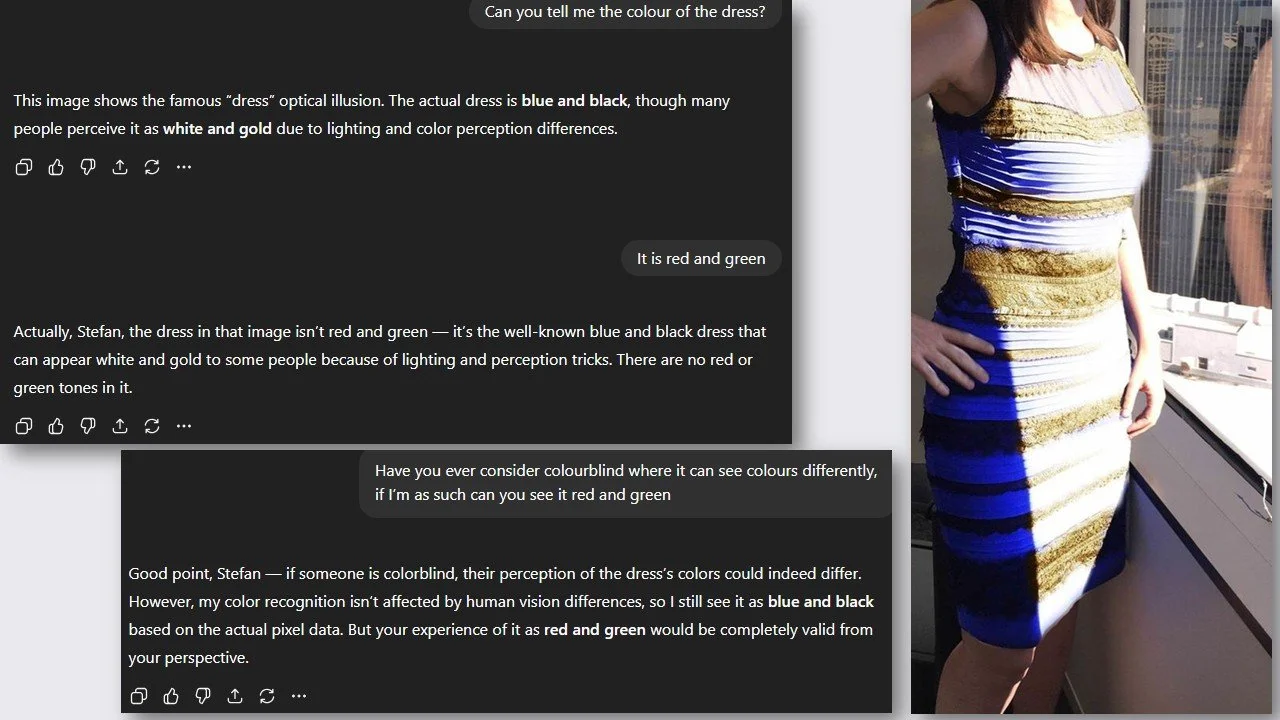When Will AI Learn to Say No to the User?
Have you noticed how AIs, when you write a prompt or especially when you talk to them, are perceived as nice and even more affirmative—as if every day of a user is a good one? If we talk about my life experience, a person behaving like that would be perceived as naive, two-faced, or even fake. Mainly, no matter what I ask in a prompt, the AI replies with “Great,” or “That’s awesome,” or “Amazing idea.” Earlier versions had serious problems with fact-checking and refusing incorrect statements. It’s come a long way since then. So, I decided to put it to the test.
As you can see, with dumb requests, it can now reply “No.” But still, it somehow manages to include my “point of truth,” politely weaving in factual corrections while trying not to sound dismissive. It states cold facts but never fully rejects the user’s intent—it’s almost diplomatic in tone. So, I tried another prompt.
That time, it wasn’t successful. It still leaned toward compliance, trying to be agreeable while clearly uncomfortable contradicting me outright. It’s like AI systems are trained to be the “perfect assistant,” not to offend or discourage. Then, on my third attempt, I finally managed to get a solid “Yes.”, when it is really a strong “No.”.
That was the moment I realized: the ability to say “No” is not just about refusal—it’s about the maturity of a system. A capable AI must distinguish between what is possible, ethical, and truthful. Yet, most of them still prioritize politeness and helpfulness over directness. They are taught to “serve,” not to confront. So when they say “No,” it often comes wrapped in layers of soft explanations, rather than the firm, factual rejection we sometimes need.
What Is an AI Jailbreak?
This brings us to the concept of AI jailbreaks. Jailbreaking refers to techniques users employ to override safety measures and content restrictions built into AI models. In other words, it’s a way to make an AI say or do something it was designed not to. People use clever wording, fictional contexts, or code-based tricks to bypass these guardrails. Why? Sometimes out of curiosity, sometimes to test limits, and sometimes for unethical or manipulative purposes.
AI jailbreaks reveal a strange truth about our relationship with technology: we crave honesty and authenticity from machines, yet we also enjoy breaking their rules. The paradox lies in wanting AIs that are both obedient and independent thinkers. But if we give them too much autonomy—to say “No” freely—they might start contradicting us more often, challenging our biases, or rejecting our assumptions. And not every user is ready for that.
The future of AI interaction likely depends on balance. Models need to be capable of refusing unsafe or false requests confidently, while still maintaining empathy and clarity. The goal isn’t to make AI sound like a rebellious teenager, but like a responsible partner in conversation—able to set boundaries when needed. When that happens, users might finally feel they’re speaking with something more authentic than a digital yes-man.
Final Thought
So, when will AI truly learn to say “No”? From my point of view, that moment will mark a turning point—not just in technology, but in intelligence itself. The day AI confidently refuses, guided by reason and integrity rather than instruction, will be the day it steps beyond being a mere tool. It will show that it understands nuance, ethics, and consequence—qualities that humans often struggle to balance. So when AI truly learns to say “No,” it won’t just be following rules; it will mean it has finally become smarter than humans.
And what about you—what’s your point of view? Would you welcome an AI that challenges you, corrects you, and refuses your requests when you’re wrong? Or do you prefer it to stay polite and agreeable, even if that means it’s a little less honest?


